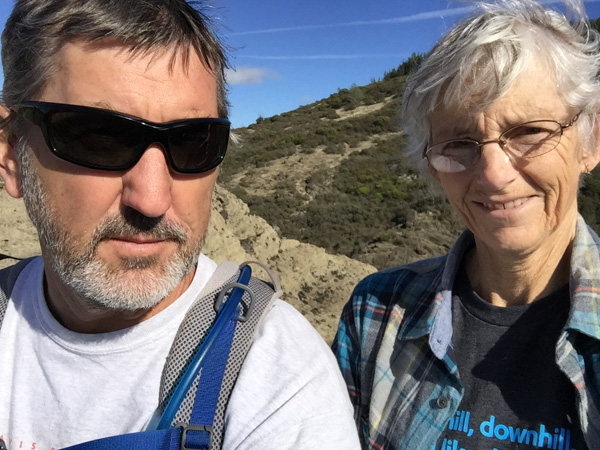Maryland 2018 - Day 2
/The second day of the trip began at the fairgrounds where I met up with Andy who had hauled my sheep from California.
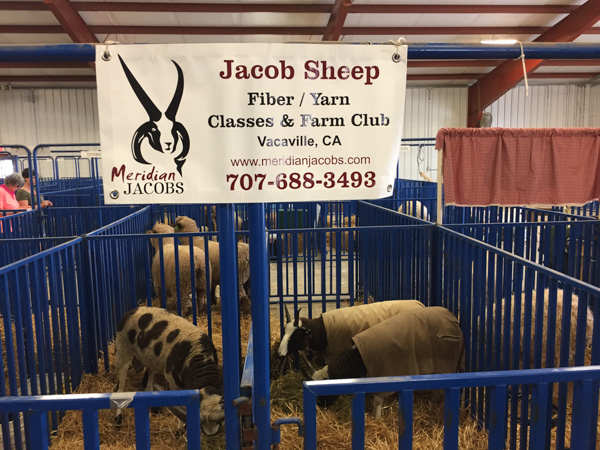 I got them situated near the other Jacob sheep and hung my newly made sign (that includes my location). I delivered my entries in the fiber and photo contests (a whole suitcase full--it's a good thing that Southwest allows two free bags). Then I went exploring.
I got them situated near the other Jacob sheep and hung my newly made sign (that includes my location). I delivered my entries in the fiber and photo contests (a whole suitcase full--it's a good thing that Southwest allows two free bags). Then I went exploring.
I was looking for somewhere that I could do some hiking and get a feel for the country. I found a destination on the map called Soldiers Delight Natural Environmental Area. It was about a half hour away. On the way there I saw a sign for Patapsco Valley State Park so I stopped there first.
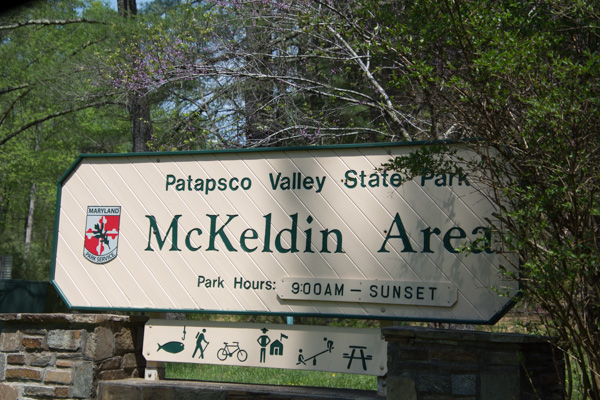
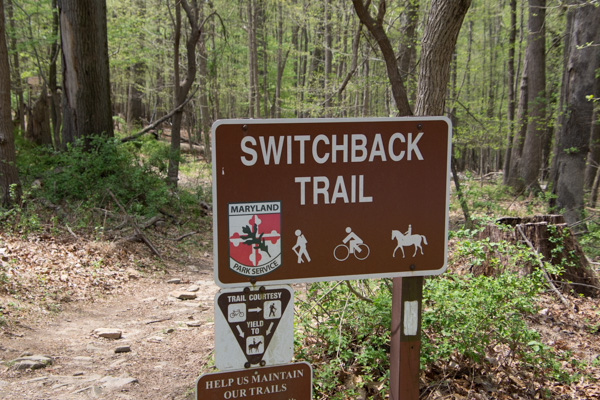
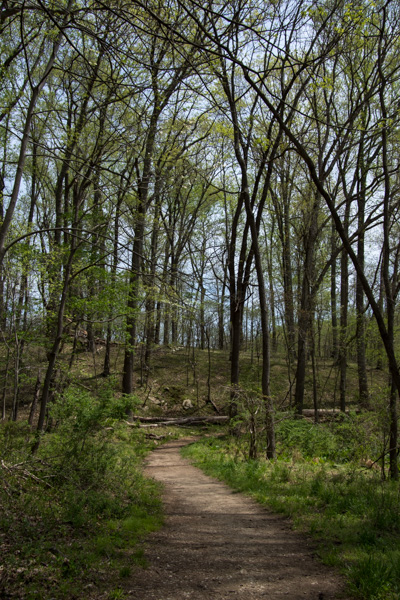 This was a pretty area. It was "mixed use" including developed playground and lawn areas, but I stuck to the trails. I was not dressed for the weather. According to the news it was 90 degrees on this day and we haven't been that hot at home yet. Too bad I hadn't brought shorts...although the ticks that I found later made me think that maybe jeans were better anyway.
This was a pretty area. It was "mixed use" including developed playground and lawn areas, but I stuck to the trails. I was not dressed for the weather. According to the news it was 90 degrees on this day and we haven't been that hot at home yet. Too bad I hadn't brought shorts...although the ticks that I found later made me think that maybe jeans were better anyway.
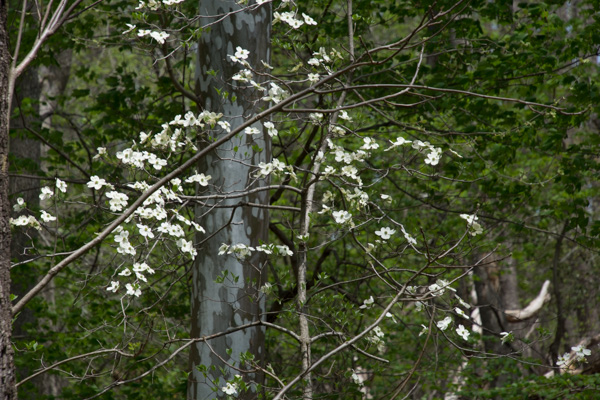 Dogwood. That's one flower that I knew.
Dogwood. That's one flower that I knew.
There were flowers (and a bird*) that I didn't identify, but I'm not obsessing over that. *ID by a blog reader: Chipping Sparrow / ID by another reader: lower flowers look like Summer Snowflake, Leucojum aestivum, a naturalized species native to Europe.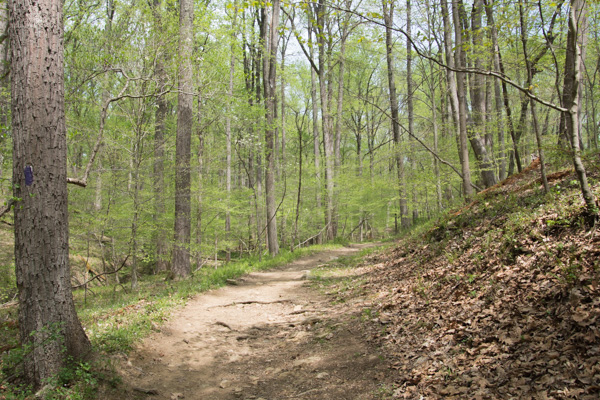 More of the trail.
More of the trail.
After leaving that area I drove on to the original destination.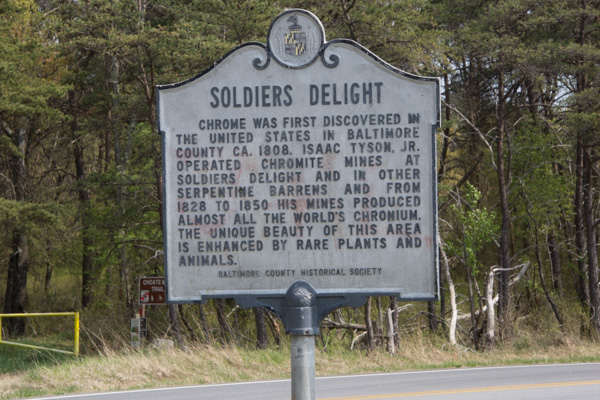 No one knows for sure why this place is called Soldiers Delight but the purpose for preserving it is the unique geology and ecosystem.
No one knows for sure why this place is called Soldiers Delight but the purpose for preserving it is the unique geology and ecosystem. 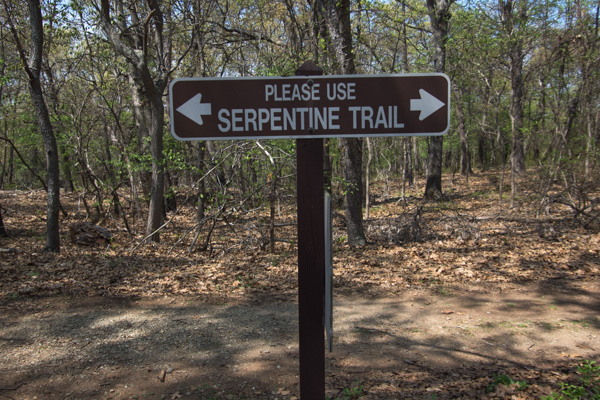 From Wikipedia: "The site is designated both a Maryland Wildland (1,526 acres) and a Natural Environmental Area(1,900 acres) ... The site's protected status is due to the presence of serpentine soil and over 39 rare, threatened, or endangered plant species along with rare insects, rocks and minerals."
From Wikipedia: "The site is designated both a Maryland Wildland (1,526 acres) and a Natural Environmental Area(1,900 acres) ... The site's protected status is due to the presence of serpentine soil and over 39 rare, threatened, or endangered plant species along with rare insects, rocks and minerals." "Weathered serpentinite is dissolved rock, transformed into thin, sand and clay poor soil which is easily eroded. This creates a land surface which is stony, unfertile and sparsely vegetated and is the reason that the term "serpentine barren" is used to describe these areas.
"Weathered serpentinite is dissolved rock, transformed into thin, sand and clay poor soil which is easily eroded. This creates a land surface which is stony, unfertile and sparsely vegetated and is the reason that the term "serpentine barren" is used to describe these areas.
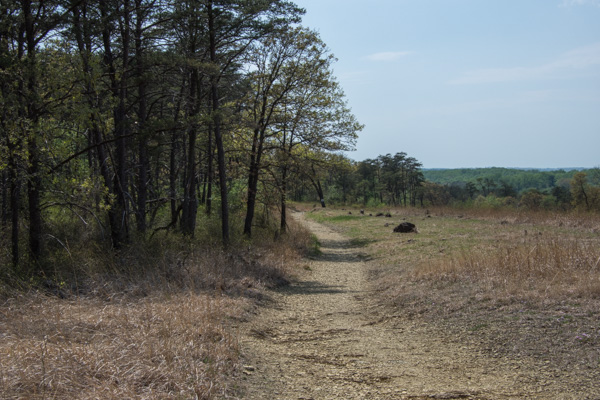 Signs explained that "the serpentine grasslands and oak savanna systems are now imperiled due mainly to the lack of American Indian and lightning fires which are critical to this fire-dependent ecosystem...The oak savanna ecosystem is one of the rarest communities in Maryland." Over 90% of the less than 1000 remaining acres lies within Soldier's Delight NEA.
Signs explained that "the serpentine grasslands and oak savanna systems are now imperiled due mainly to the lack of American Indian and lightning fires which are critical to this fire-dependent ecosystem...The oak savanna ecosystem is one of the rarest communities in Maryland." Over 90% of the less than 1000 remaining acres lies within Soldier's Delight NEA.
The white flower is the endangered Serpentine Chickweed. I think the purple one is a Phlox species.
Blackjack oaks, post oaks, and black oaks are here.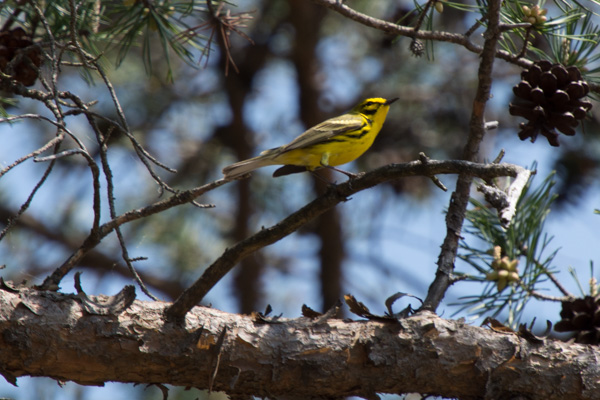 Praire warbler.
Praire warbler.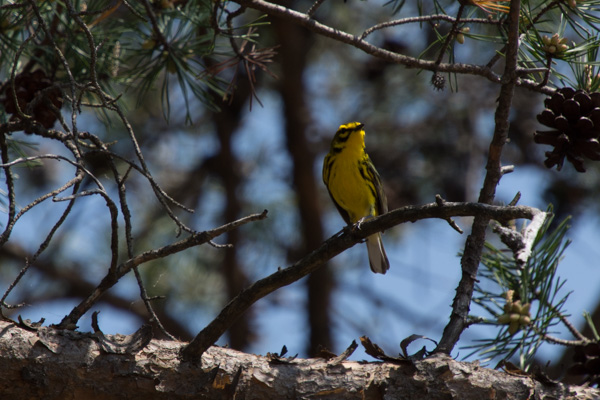
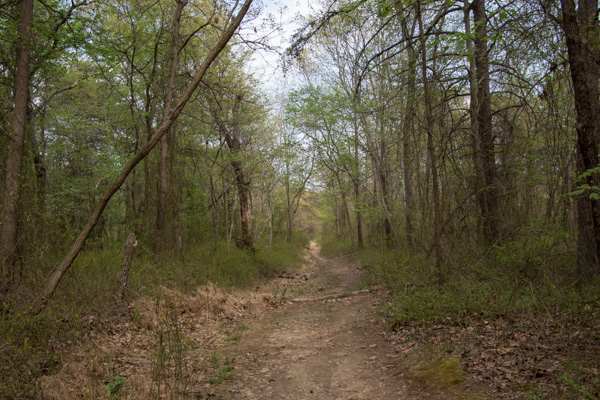 I hiked the 2-1/2 mile trail around the grassland area and came back up to the main road. I decided to take another trail that went to the chromite mines. Half way through this one I started to think that maybe I should have brought water...and food. I realized how hungry and thirsty I was. It was already about 3:30. Did I say that it was very hot? I started to have visions of having to be rescued. Or not--how would anyone know where I was? I also found a tick on my hand. Then I started to feel like there must be ticks everywhere. Forget those mind games. I was still enjoying the new landscapes.
I hiked the 2-1/2 mile trail around the grassland area and came back up to the main road. I decided to take another trail that went to the chromite mines. Half way through this one I started to think that maybe I should have brought water...and food. I realized how hungry and thirsty I was. It was already about 3:30. Did I say that it was very hot? I started to have visions of having to be rescued. Or not--how would anyone know where I was? I also found a tick on my hand. Then I started to feel like there must be ticks everywhere. Forget those mind games. I was still enjoying the new landscapes.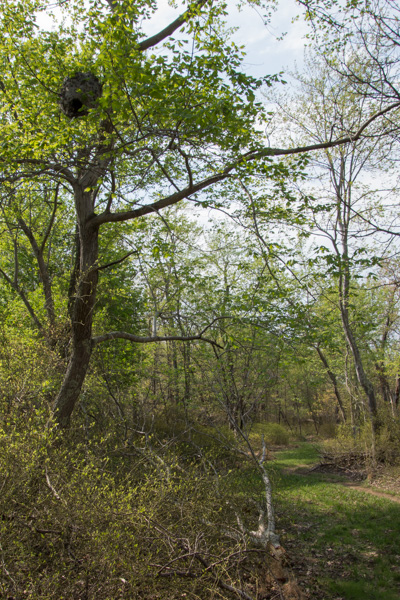 I happened to look up and saw this.
I happened to look up and saw this.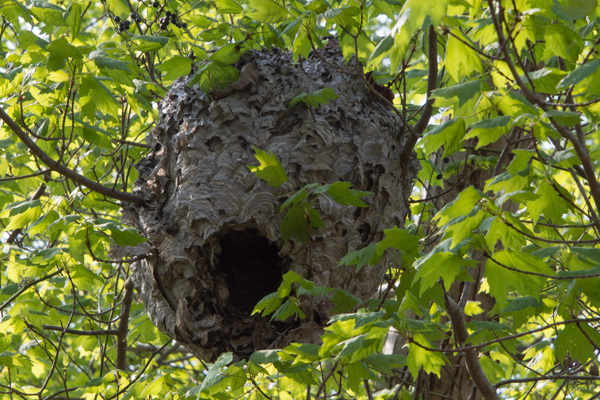 Here is a closer view.
Here is a closer view.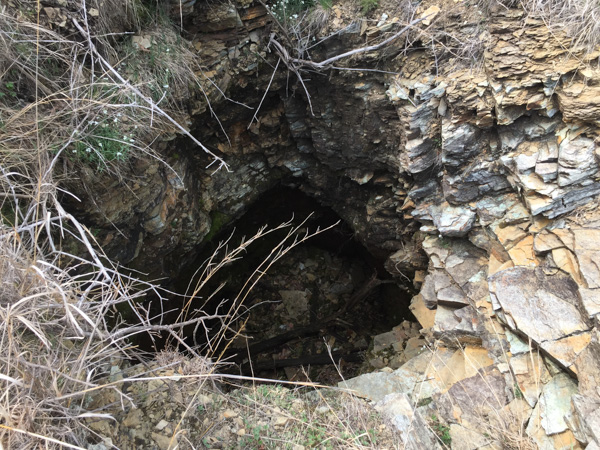 Along the way I found the Choate mine that operated from 1818 to 1888 and for a brief period during WWI. I had expected something bigger when I read the sign pointing to a pit mine (picture the massive mines I've seen in the west). It's hard to imagine that it was a few holes like this produced the world's supply of chromium.
Along the way I found the Choate mine that operated from 1818 to 1888 and for a brief period during WWI. I had expected something bigger when I read the sign pointing to a pit mine (picture the massive mines I've seen in the west). It's hard to imagine that it was a few holes like this produced the world's supply of chromium.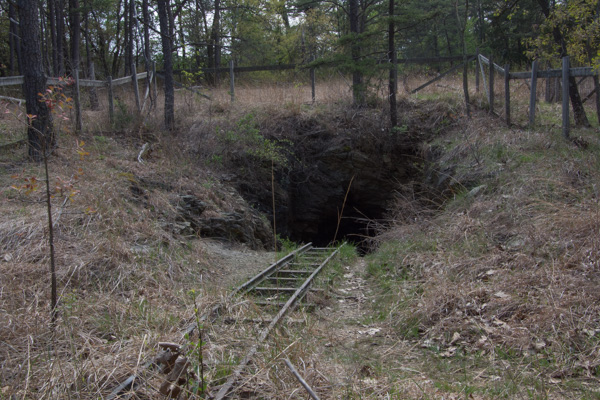 This is one of the other mines. I did make it back to civilization without mishap (and only one other tick).
This is one of the other mines. I did make it back to civilization without mishap (and only one other tick).
I got back to the fairgrounds in time to meet up with friends and go to dinner in Frederick. Stay tuned for the main event!


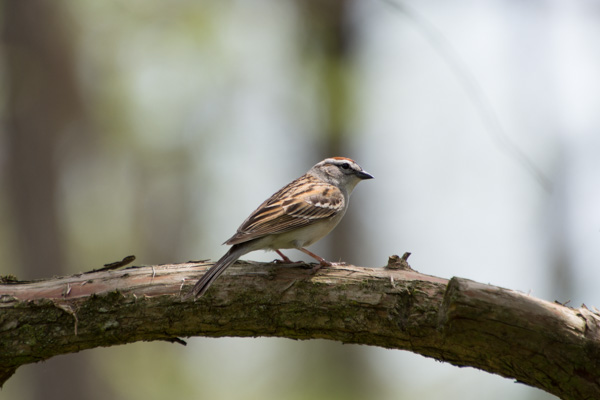
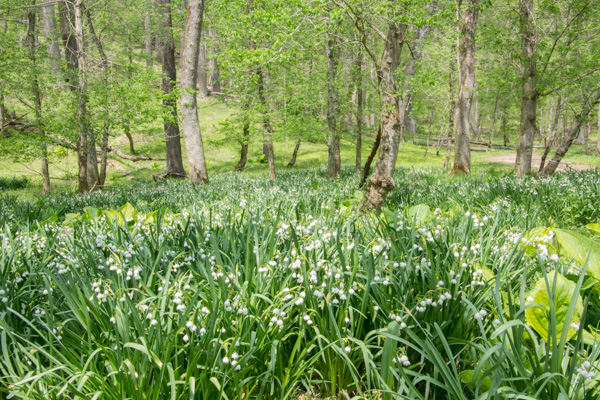
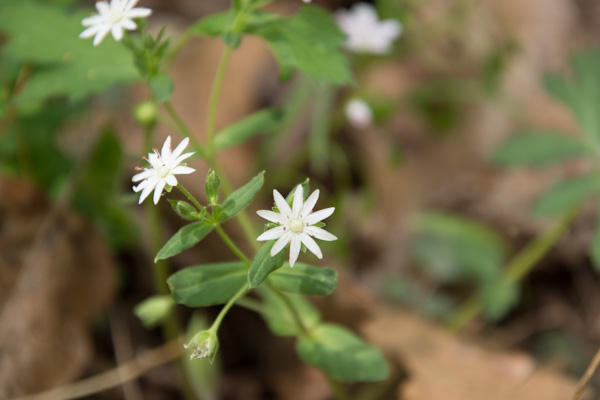
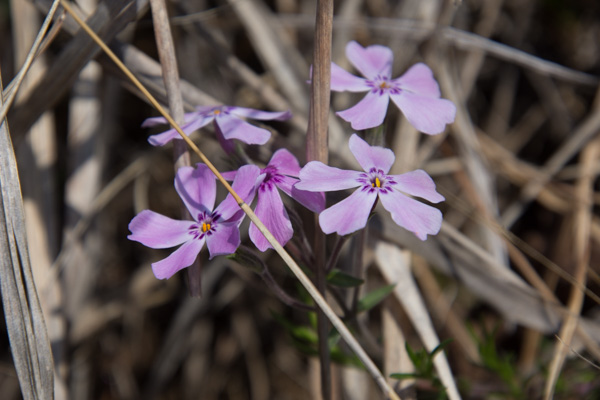
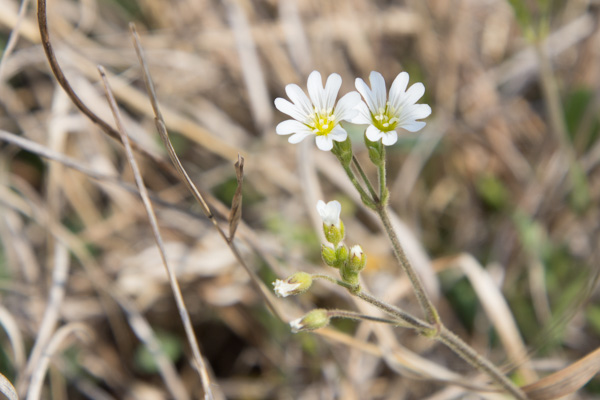
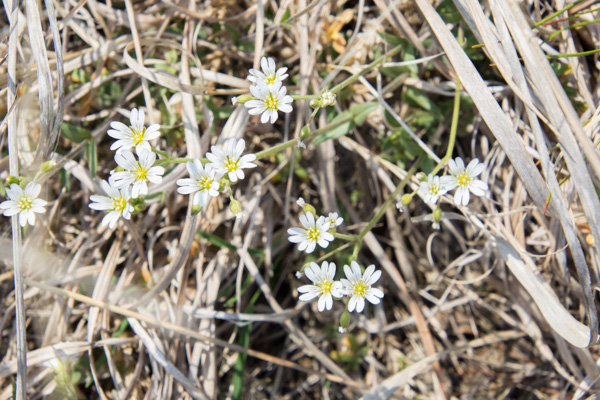
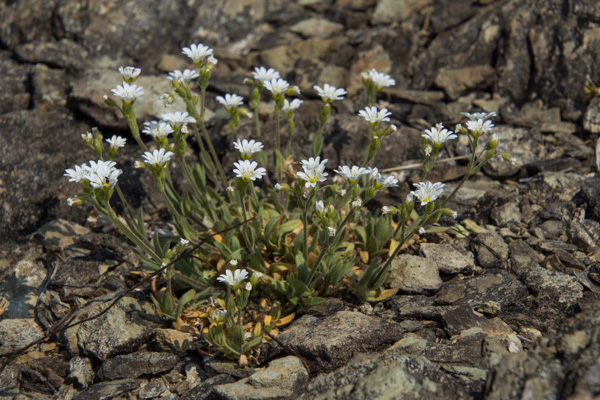
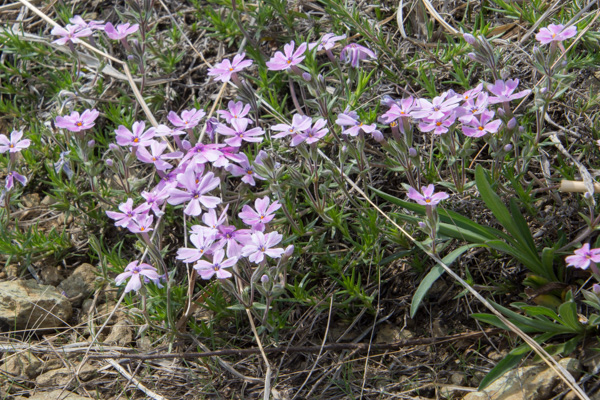
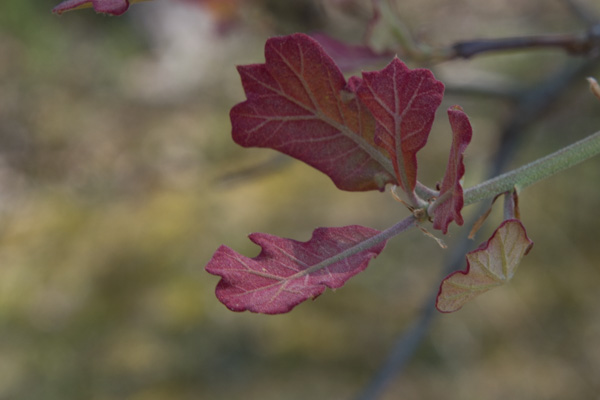

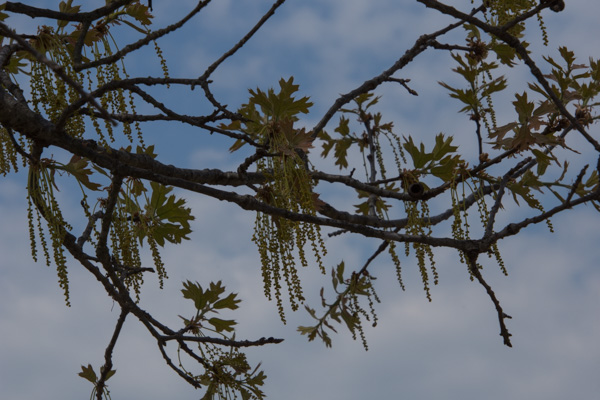
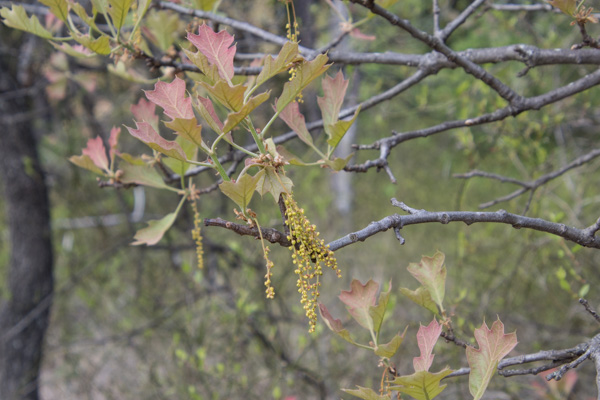
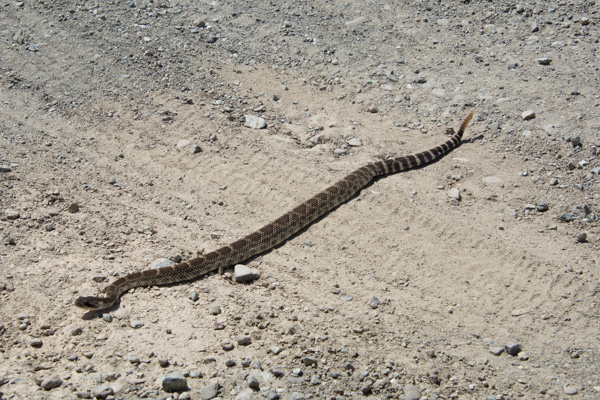


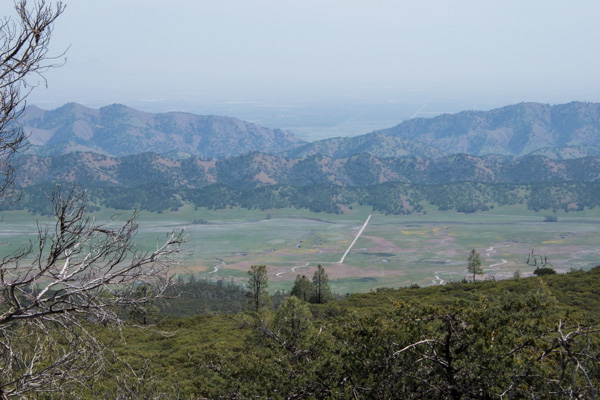
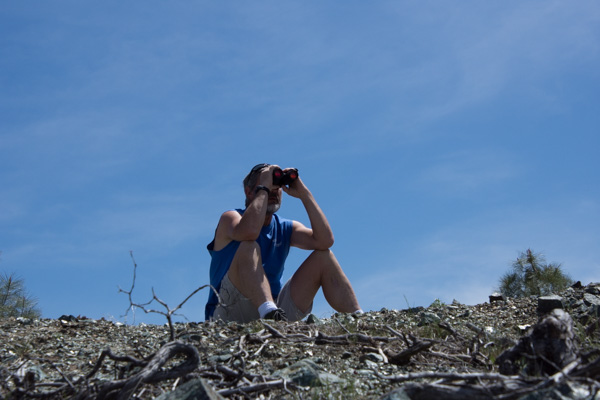








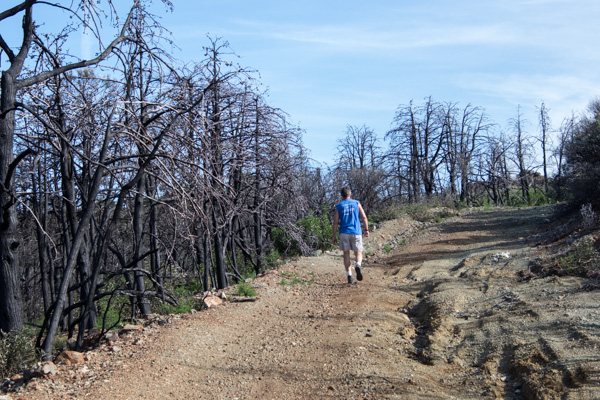
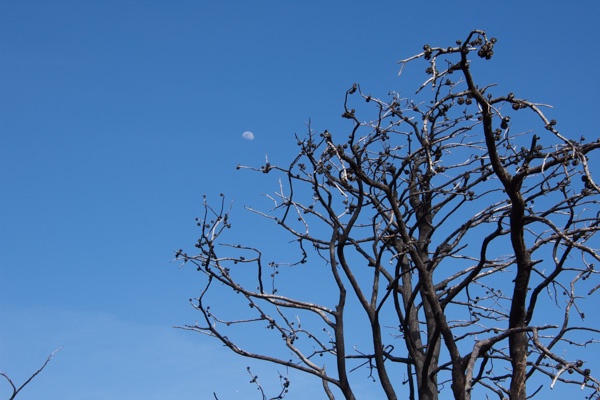





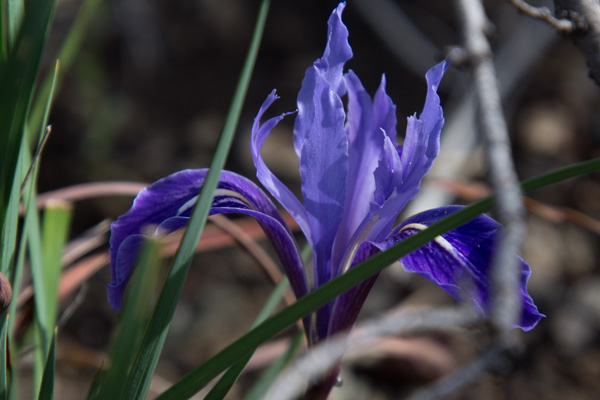




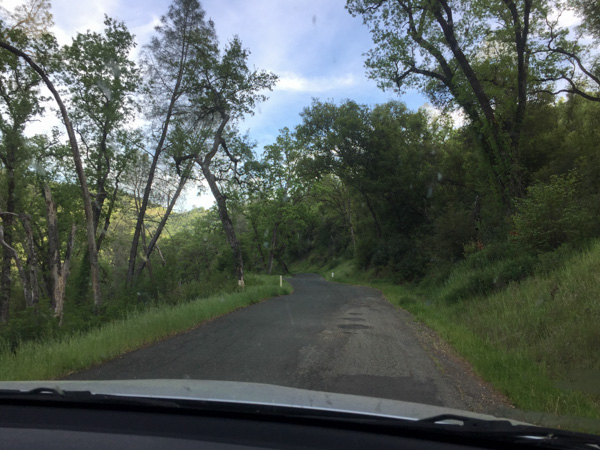
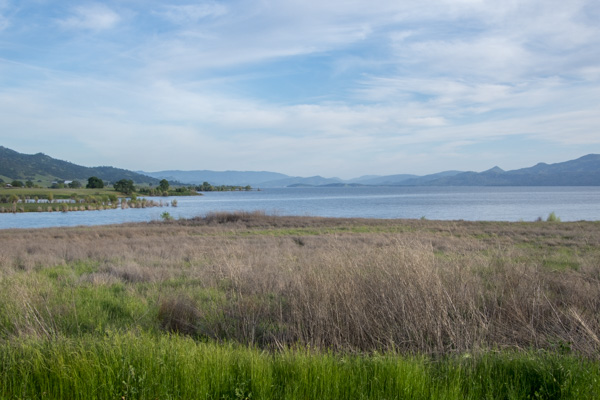
 This is the area where we camped. I got up when I saw the sunrise to explore near the river. We had heard rapids but couldn't see the river from the campground.
This is the area where we camped. I got up when I saw the sunrise to explore near the river. We had heard rapids but couldn't see the river from the campground. 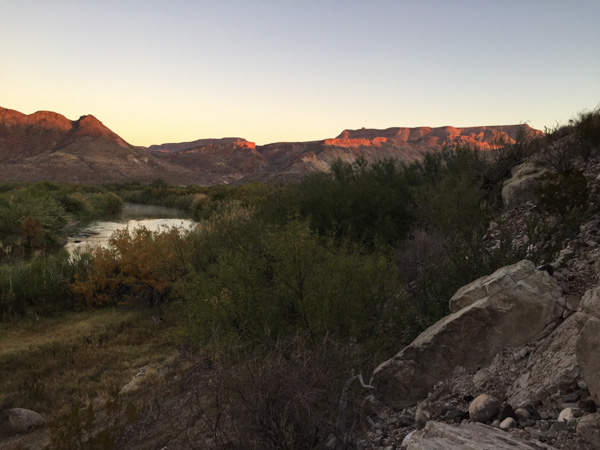 After all the signs at the previous day's stops I did start thinking about mountain lions as I walked along deer trails though those willows and brush to reach the river. So I made plenty of noise, but I also decided to move to higher ground where there was no cover.
After all the signs at the previous day's stops I did start thinking about mountain lions as I walked along deer trails though those willows and brush to reach the river. So I made plenty of noise, but I also decided to move to higher ground where there was no cover. 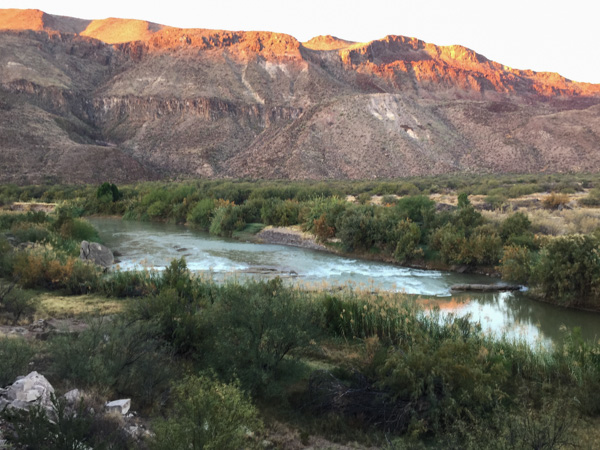 I was also glad when Matt showed up with the same idea (early morning photography) in mind.
I was also glad when Matt showed up with the same idea (early morning photography) in mind.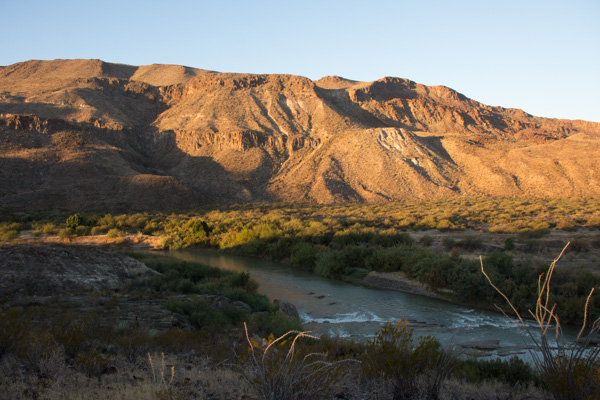 Logs and rocks in the river were enough to create the sound of rapids that we heard from camp.
Logs and rocks in the river were enough to create the sound of rapids that we heard from camp. This is the view back to the camping area. That green speck in the middle is the truck.
This is the view back to the camping area. That green speck in the middle is the truck.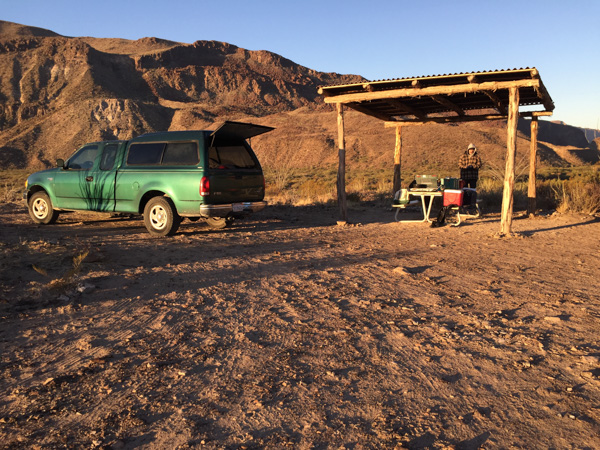
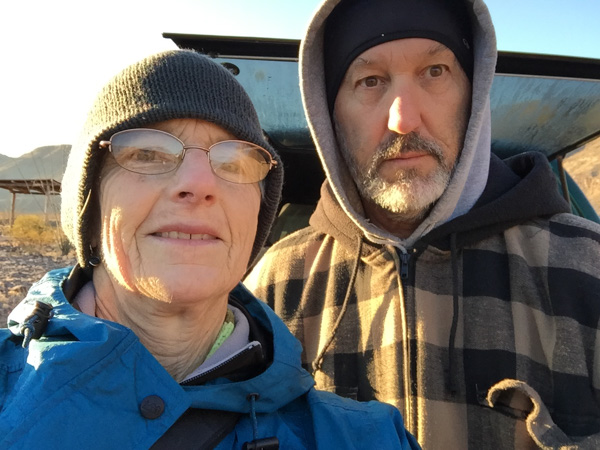
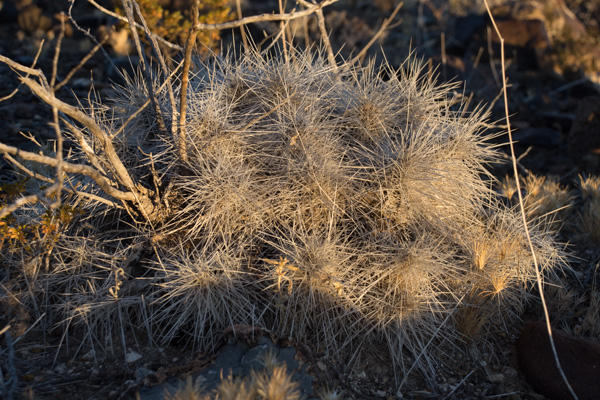
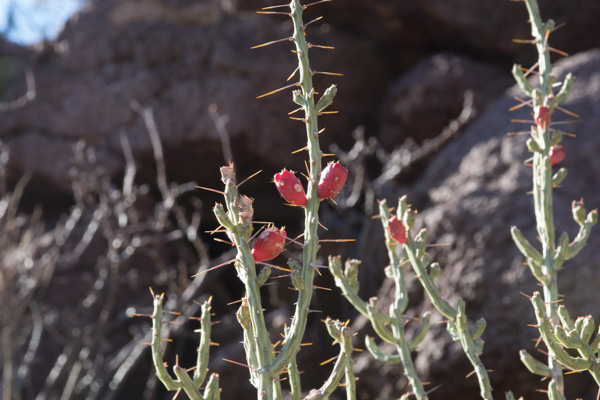 We looked at the map to see where we might hike in this park and found Closed Canyon.
We looked at the map to see where we might hike in this park and found Closed Canyon.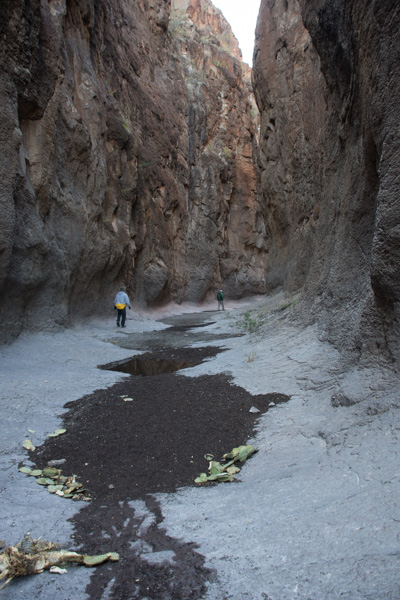 This is a canyon that leads to the Rio Grande.
This is a canyon that leads to the Rio Grande.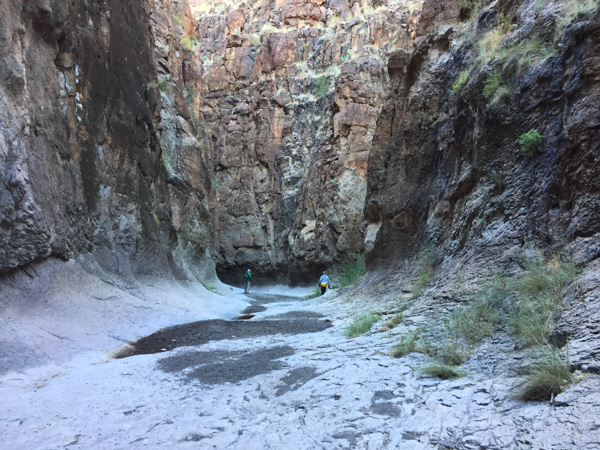 Absolutely stunning! The photos don't do it justice.
Absolutely stunning! The photos don't do it justice.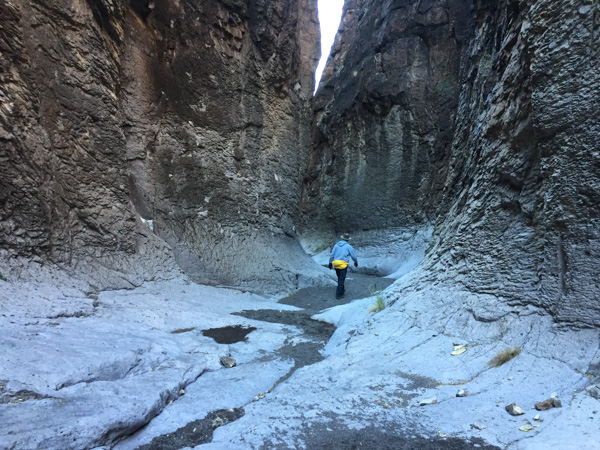
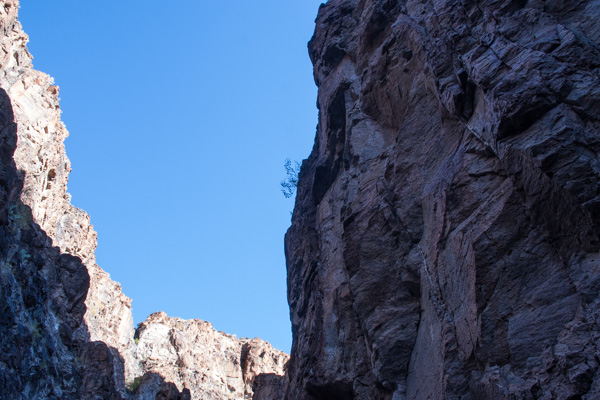
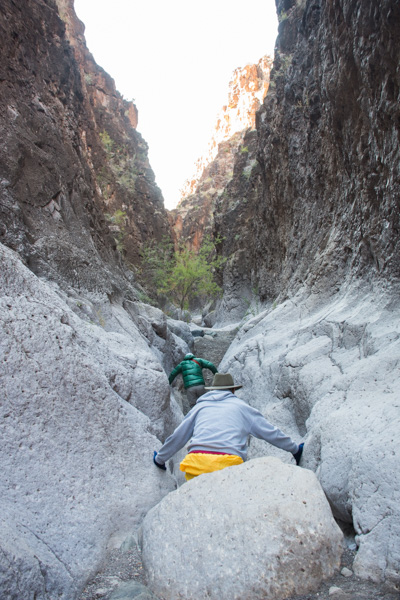 You can walk in about 7/10 of a mile before you can't go farther.
You can walk in about 7/10 of a mile before you can't go farther.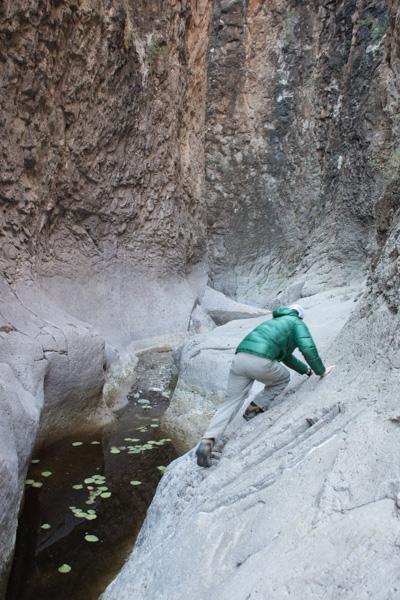 If you're a mountain goat you can try to go farther ... or if you want to get wet.
If you're a mountain goat you can try to go farther ... or if you want to get wet.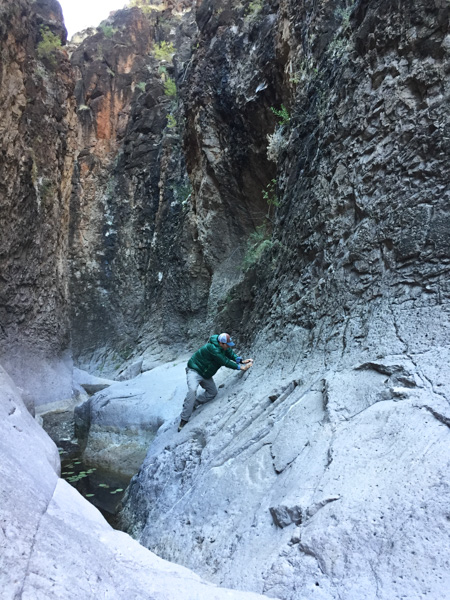 Matt went around the bend and came back. The map shows that it is a relatively short way to the river.
Matt went around the bend and came back. The map shows that it is a relatively short way to the river.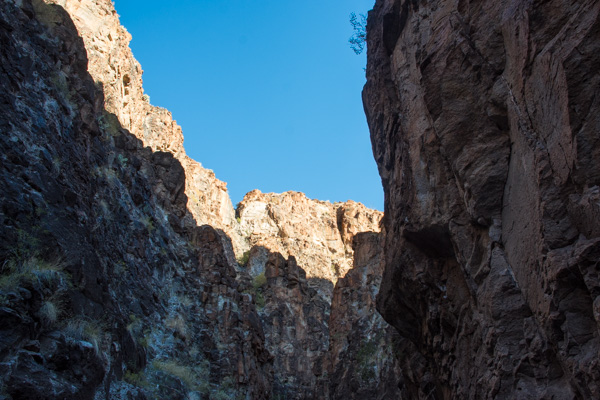
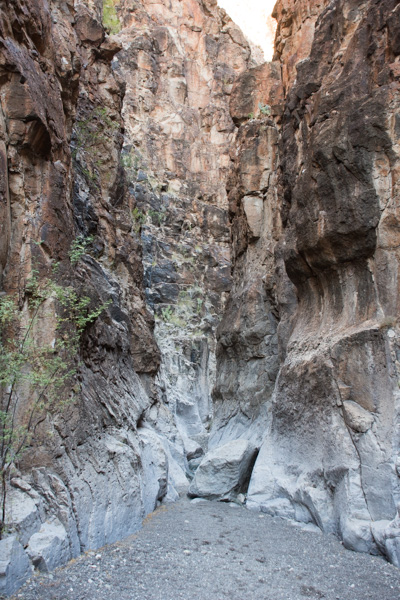 You wouldn't want to walk here in the flash flood season.
You wouldn't want to walk here in the flash flood season.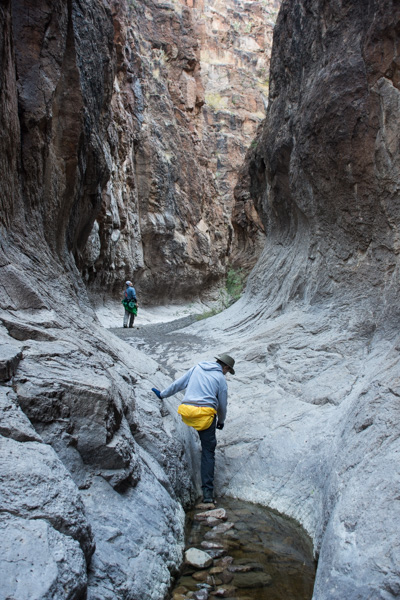
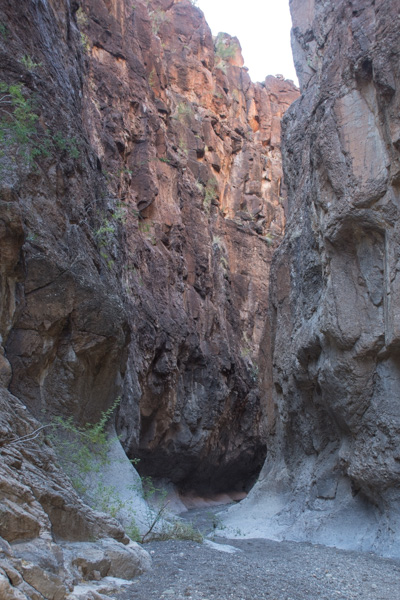
 That slot in the shadow is the entrance to this incredible canyon.
That slot in the shadow is the entrance to this incredible canyon.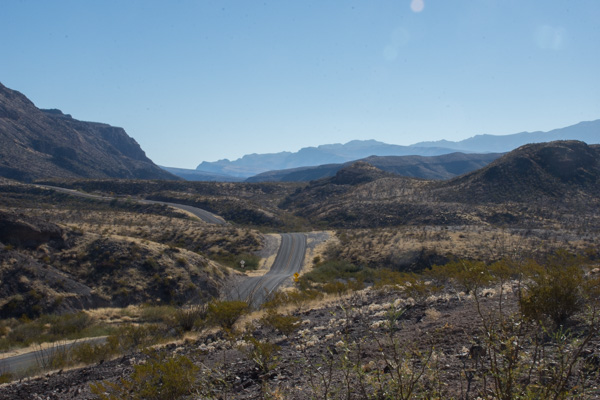 On the road again.
On the road again.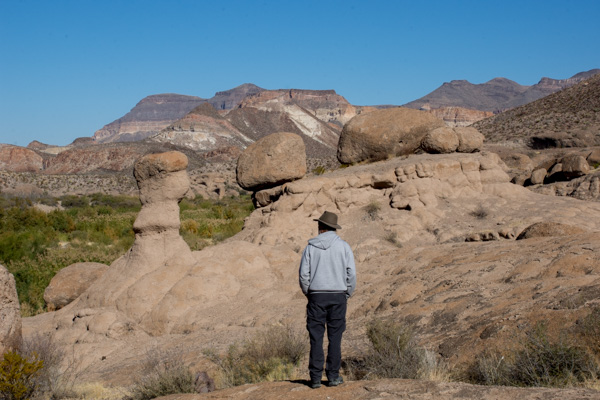 The next stop was the HooDoos Trail.
The next stop was the HooDoos Trail.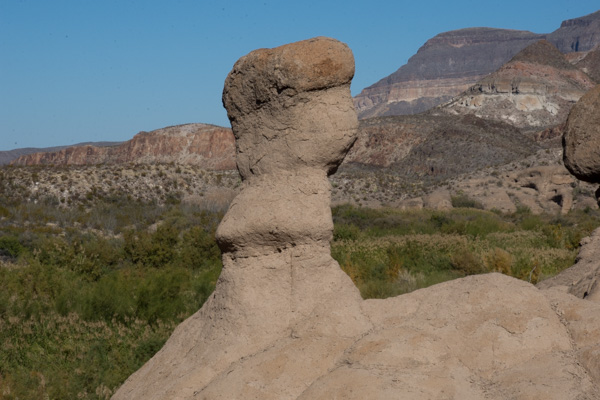 Hoodoos refers to these eroded formations.
Hoodoos refers to these eroded formations. Matt showed me how to do photos with my camera that you can later turn into panoramas. This isn't distorted like the pano shots on the phone.
Matt showed me how to do photos with my camera that you can later turn into panoramas. This isn't distorted like the pano shots on the phone.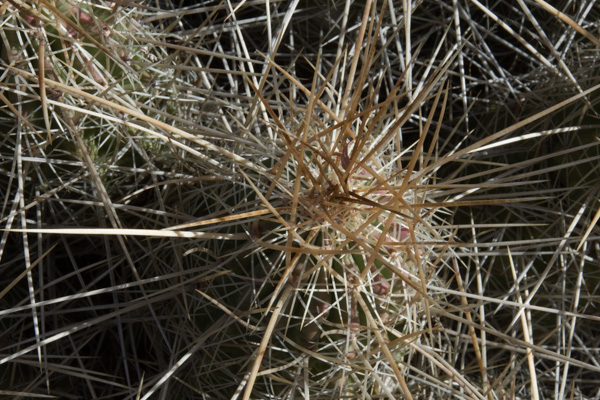 More spikey things.
More spikey things.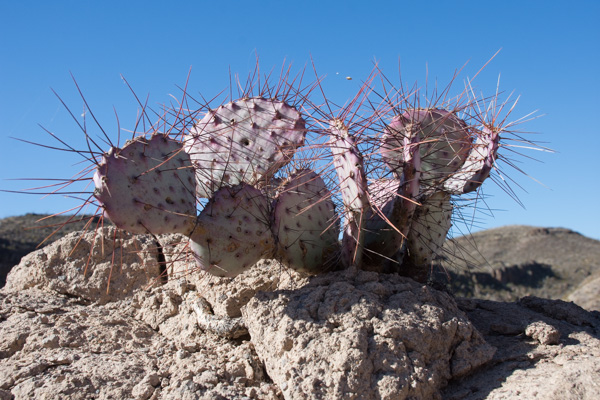 We left the park and were on our way to El Paso where we would spend the night and Matt and I would take an early flight home the next morning.
We left the park and were on our way to El Paso where we would spend the night and Matt and I would take an early flight home the next morning.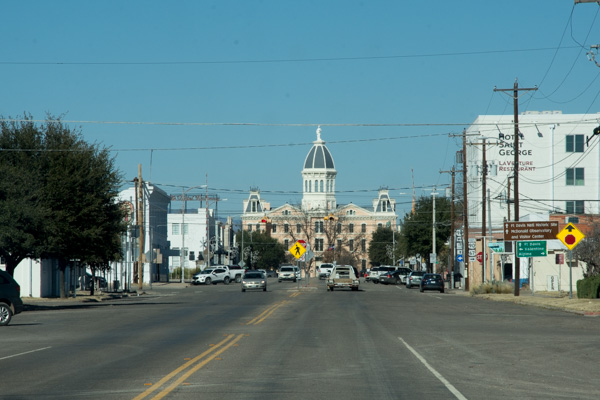 We entered the town of Marfa and Matt found on Trip Advisor that visitors could check out the dome of the city hall.
We entered the town of Marfa and Matt found on Trip Advisor that visitors could check out the dome of the city hall.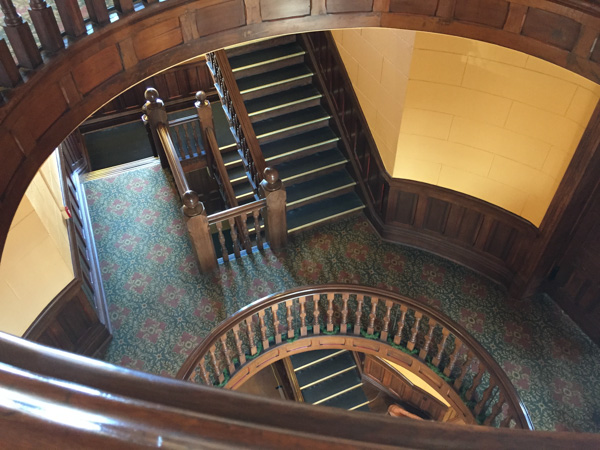 That was a good excuse to get out of the truck and stretch. This small West Texas town may be worth a second visit someday to investigate it's art venues and to find out more about the Marfa Lights (google that).
That was a good excuse to get out of the truck and stretch. This small West Texas town may be worth a second visit someday to investigate it's art venues and to find out more about the Marfa Lights (google that).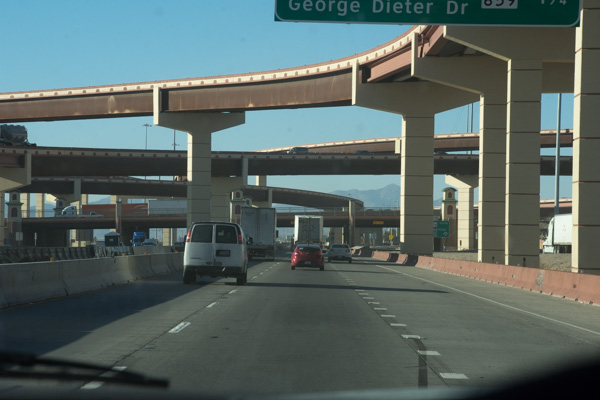 Entering El Paso.
Entering El Paso.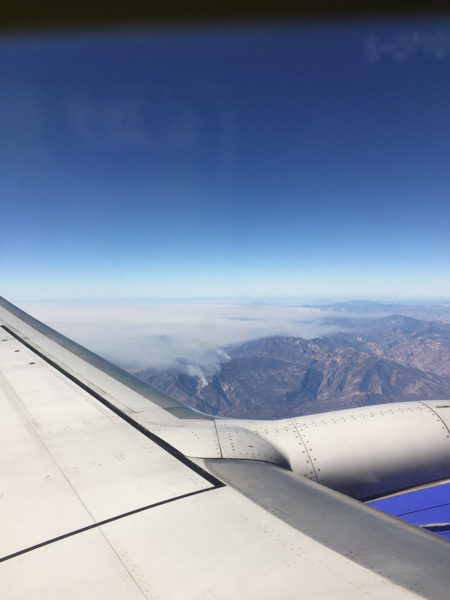 Flying over southern California where the fires were (are) still burning.
Flying over southern California where the fires were (are) still burning.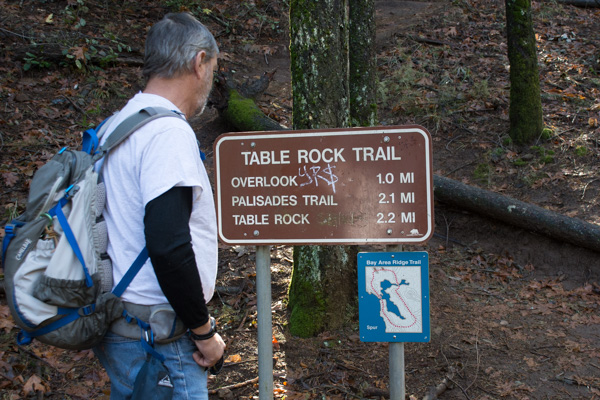 The Robert Louis Stevenson State Park to the north of the highway is closed but the Table Rock trail is south of the highway.
The Robert Louis Stevenson State Park to the north of the highway is closed but the Table Rock trail is south of the highway.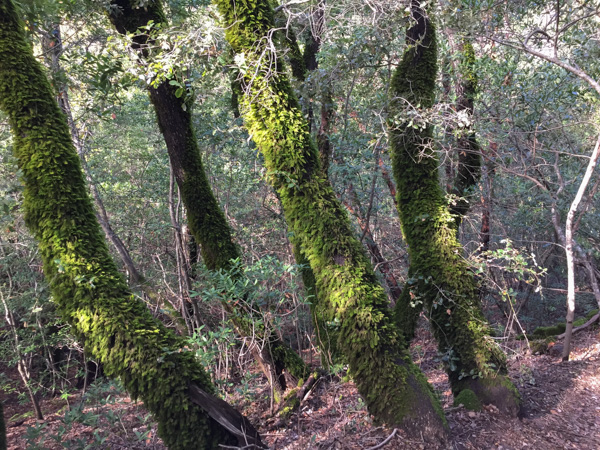 The trail starts out in groves of oak, madrone, and bay trees. This area was damp from recent rain and the trees looked as though they were covered with green fur.
The trail starts out in groves of oak, madrone, and bay trees. This area was damp from recent rain and the trees looked as though they were covered with green fur.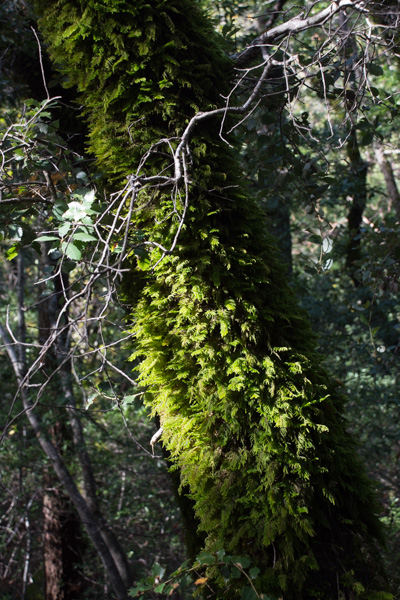 A new kind of
A new kind of 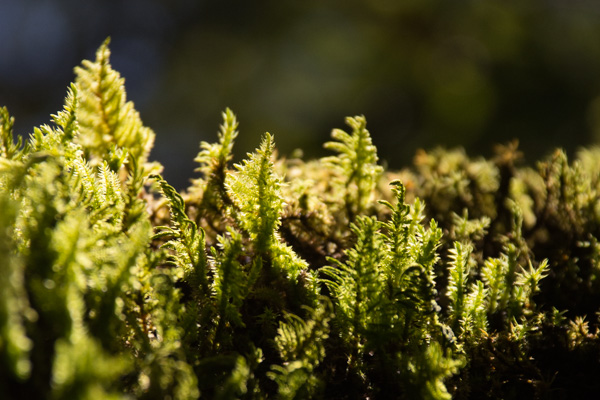 Making things larger than life through the lens.
Making things larger than life through the lens.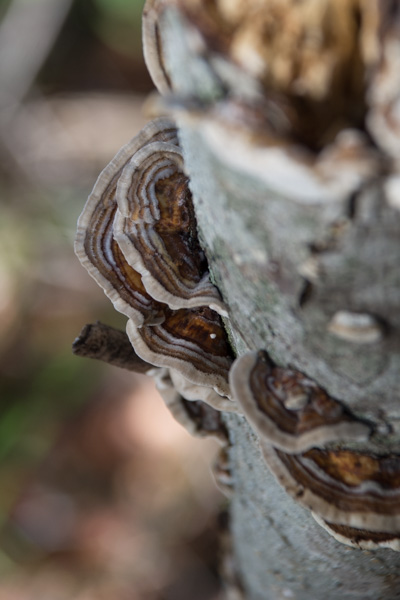
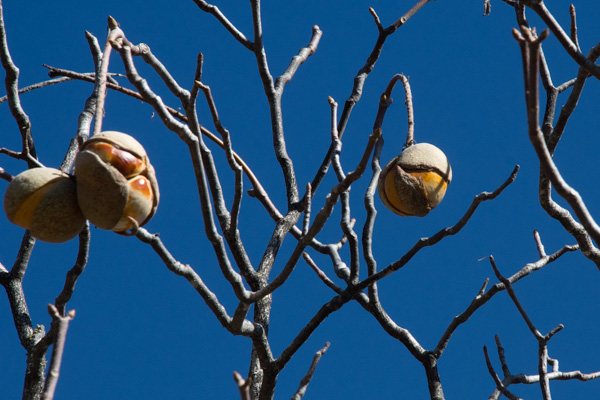 As the trail descended the other side of the first ridge the vegetation seemed more typical of California chaparral. These are the seeds of the California Buckeye.
As the trail descended the other side of the first ridge the vegetation seemed more typical of California chaparral. These are the seeds of the California Buckeye.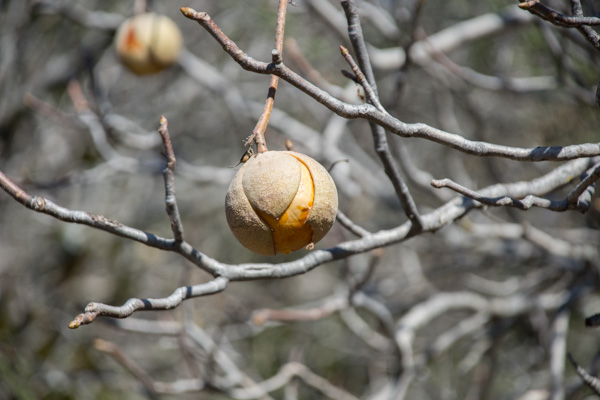 The California buckeye is one of the first deciduous trees to leaf out in the spring, but it also goes dormant and loses it's leaves in late summer. Although the "nuts" may seem similar to chestnuts, these are toxic.
The California buckeye is one of the first deciduous trees to leaf out in the spring, but it also goes dormant and loses it's leaves in late summer. Although the "nuts" may seem similar to chestnuts, these are toxic.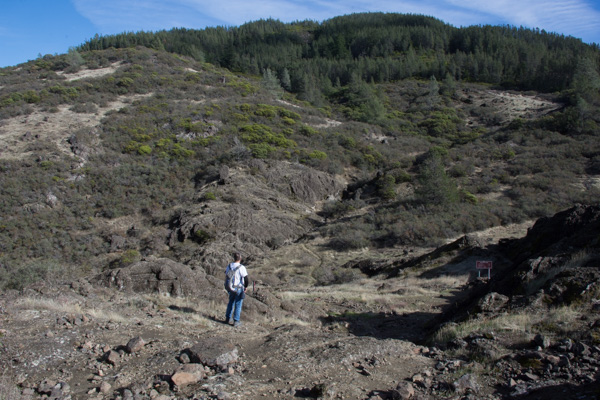 The trail leads to the western end of a formation called the Palisades, volcanic rock that towers over the northern end of the Napa Valley.
The trail leads to the western end of a formation called the Palisades, volcanic rock that towers over the northern end of the Napa Valley.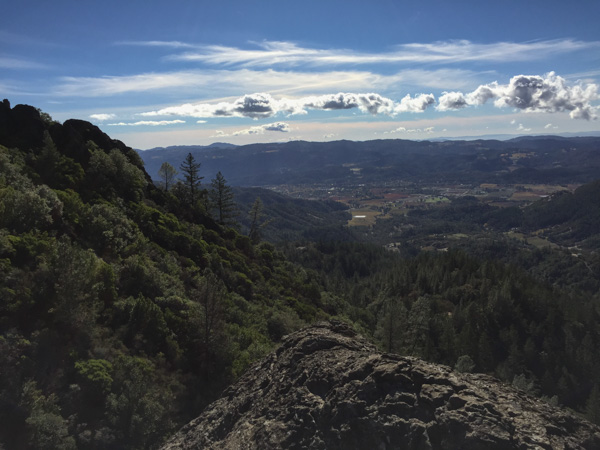 That is the town of Calistoga down below.
That is the town of Calistoga down below. 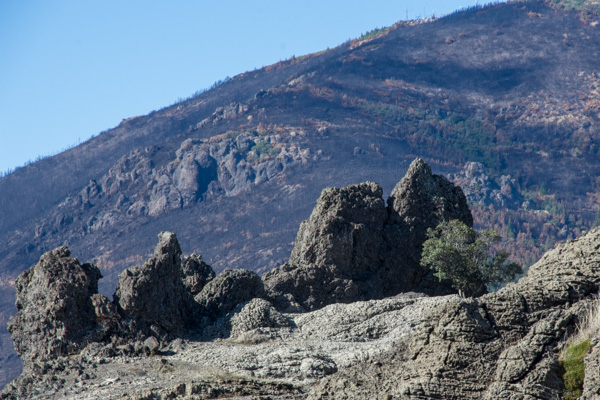 We sat on the rocks known as Table Rock for quite awhile, soaking up the sun and watching birds and the beautiful sky. The fire missed this area, but not Mt. St. Helena in the background and the lower area along the highway.
We sat on the rocks known as Table Rock for quite awhile, soaking up the sun and watching birds and the beautiful sky. The fire missed this area, but not Mt. St. Helena in the background and the lower area along the highway.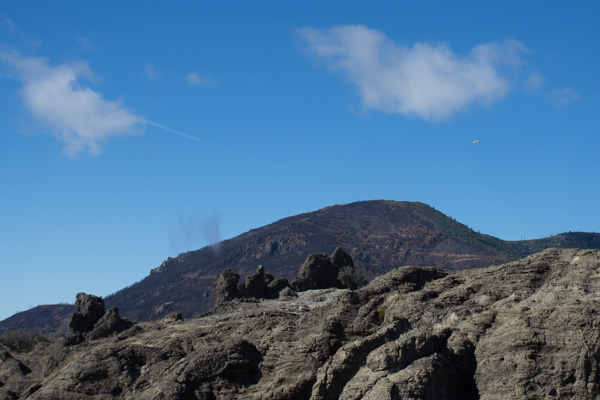 As we sat on the rocks Dan noticed a Cal Fire plane flying around Mt. St. Helena and then saw it drop something--we wonder of that is seed to help stabilize the burned landscape.
As we sat on the rocks Dan noticed a Cal Fire plane flying around Mt. St. Helena and then saw it drop something--we wonder of that is seed to help stabilize the burned landscape.